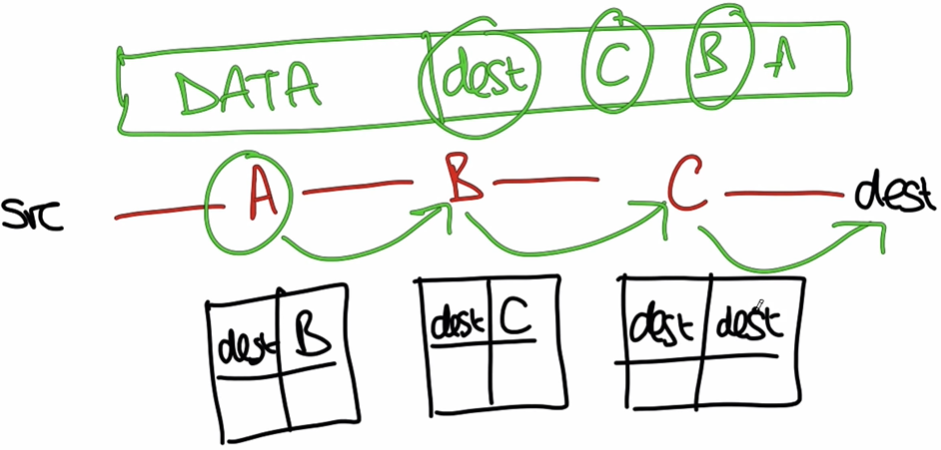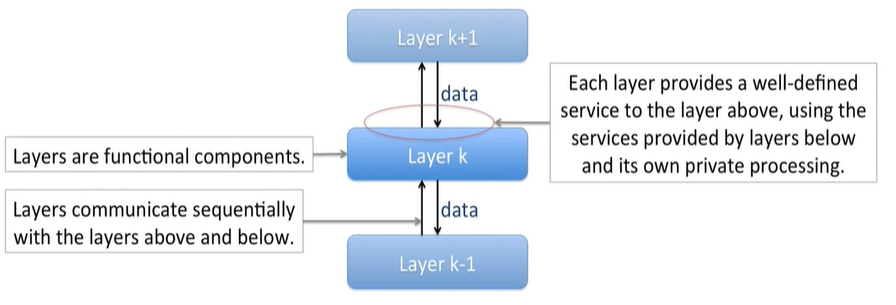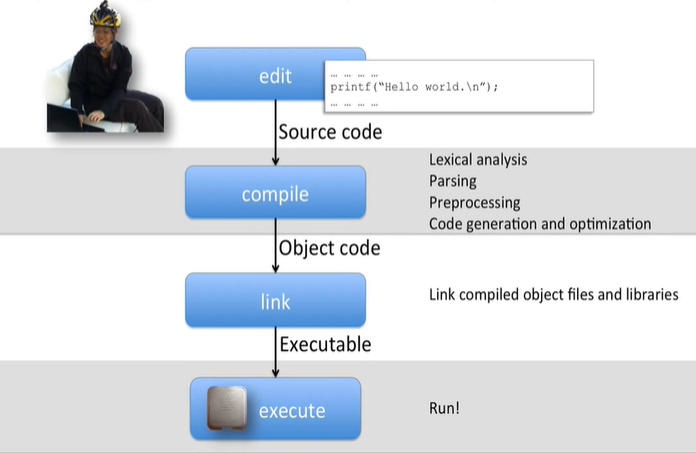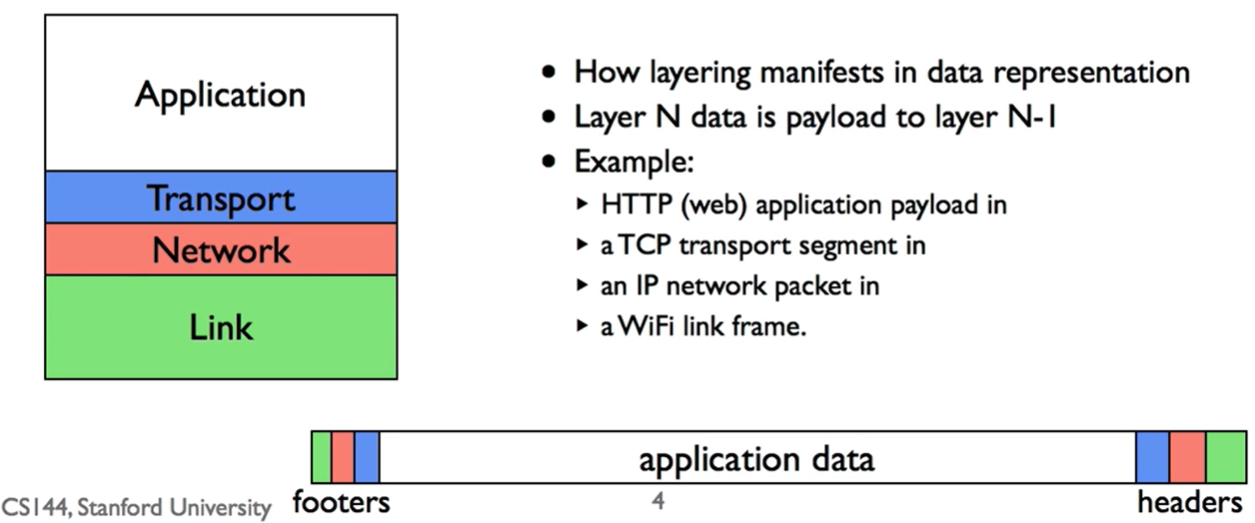Stanford CS144笔记(二)
Packet Switching Principle
1. What is packet switching?
Packet switching is the ideal that we break our data into discrete, self-contained chunks of data, each chunks called a packet, carries sufficient information that a network can deliver packet to it's destination.
Packet: A self-contained unit of data that carries information necessary for it to reach its destinatioin.
Packet switching: Independently for each arriving packet, pick its outgoing link. If the link is free, send it. Else hold the packet for later.
Packet only need to carry the destination address, packet will be transfered to the next switch according to a table.

2. Two consequences
- Simple packet forwarding.
- Efficient sharing of links.
3. No per-flow state required
Flow: A collection of datagrams belonging to the same end-to-end communication, e.g.a TCP connection.
Packet switches don't need state for each flow - each packet is self-contained.
Just forward packets quickly and efficiently.
- No per-flow state to be added/removed.
- No per-flow state to be stored.
- No per-flow state to be changed upon failure.
Data traffic is bursty:
- Packet switching allows flows to use all available link capacity.
- Packet switching allows flows to share link capacity.
This is called Statistical Multiplexing.
4. Summary
- Pakcet switches are simple: they forward packets independently, and dong't need to know about flows.
- Packet switching is efficient: It lets us efficiently share the capacity among many flows sharing a link.
Layering Principle
1. What is Layering?

2. Layering in a Computer System

3. Reasons for layering
- Modularity
- Well defined service
- Reuse
- Separation of concerns
- Continuous improvement
Encapsulation Principle
Encapsulation is the result of what happens when you combine layers and packet switching.
Each protocol layer has some headers.

A special example: VPN(Virtual Private Network)
VPN工作原理
专业之外,喜欢阅读,尤爱哲学、金庸、马尔克斯。

